Archive
Rudolf von Leyden
- Rudolf
- von Leyden
Rudi von Leyden, Rudy von Leyden
- 08-08-1909
- Berlin (DE)
- 25-03-1983
- Vienna (AT)
- GeologistAdvertisement SpecialistJournalistArt CriticArt CollectorCartoonist
The advertisement expert, Rudolf von Leyden, became a major art critic and art historian in Bombay in the 1940s, advocating an urgent need for modernism in art in post-colonial India.
Word Count: 30
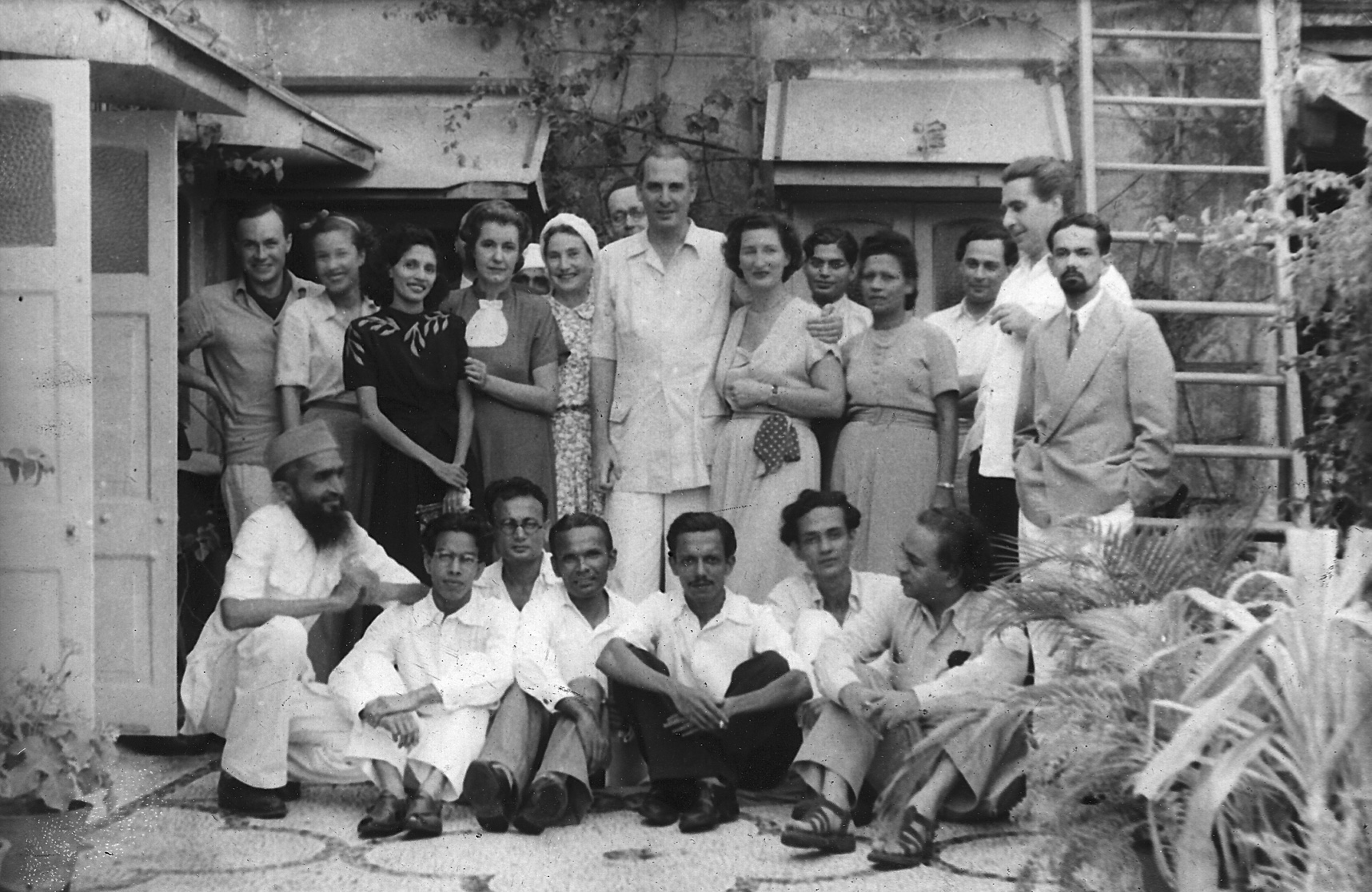
Rudolf and Nena von Leyden’s farewell party for Francis Newton. Showing all members of the Progressive Artists’ Group. Front from left: PAG = M.F. Husain, S.K. Bakre, H.A. Gade, K.H. Ara, F.N. Souza, S.H. Raza with writer Mulk Raj Anand (1st right front). Back: Käthe Langhammer (with lace collar dress), Rudolf von Leyden with his wife Nena (centre), Walter Langhammer (2nd right), Ebrahim Alkazi (theatre pioneer, 1st right back), Bombay 1949. (© Private Archive James von Leyden, Lewes; All Rights Reserved). 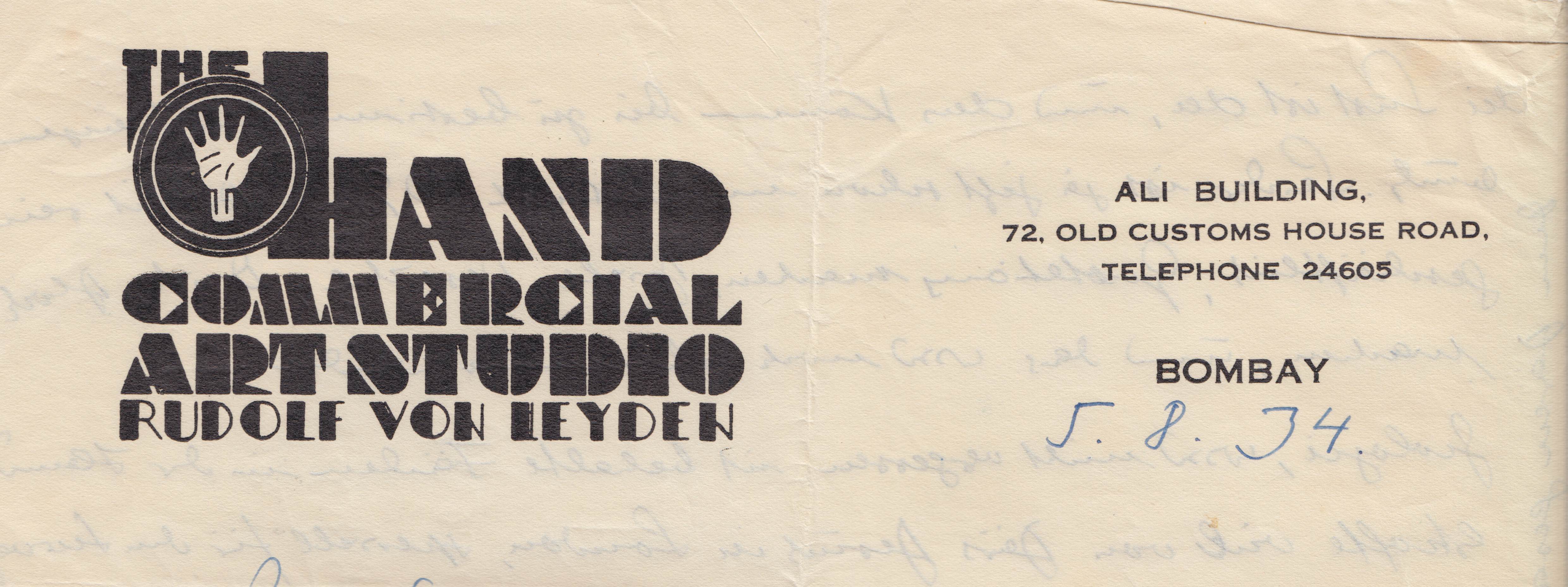
Letterhead of The Hand. Commercial Art Studio Rudolf von Leyden, 1934 (© Private Archive James von Leyden, Lewes; All Rights Reserved). 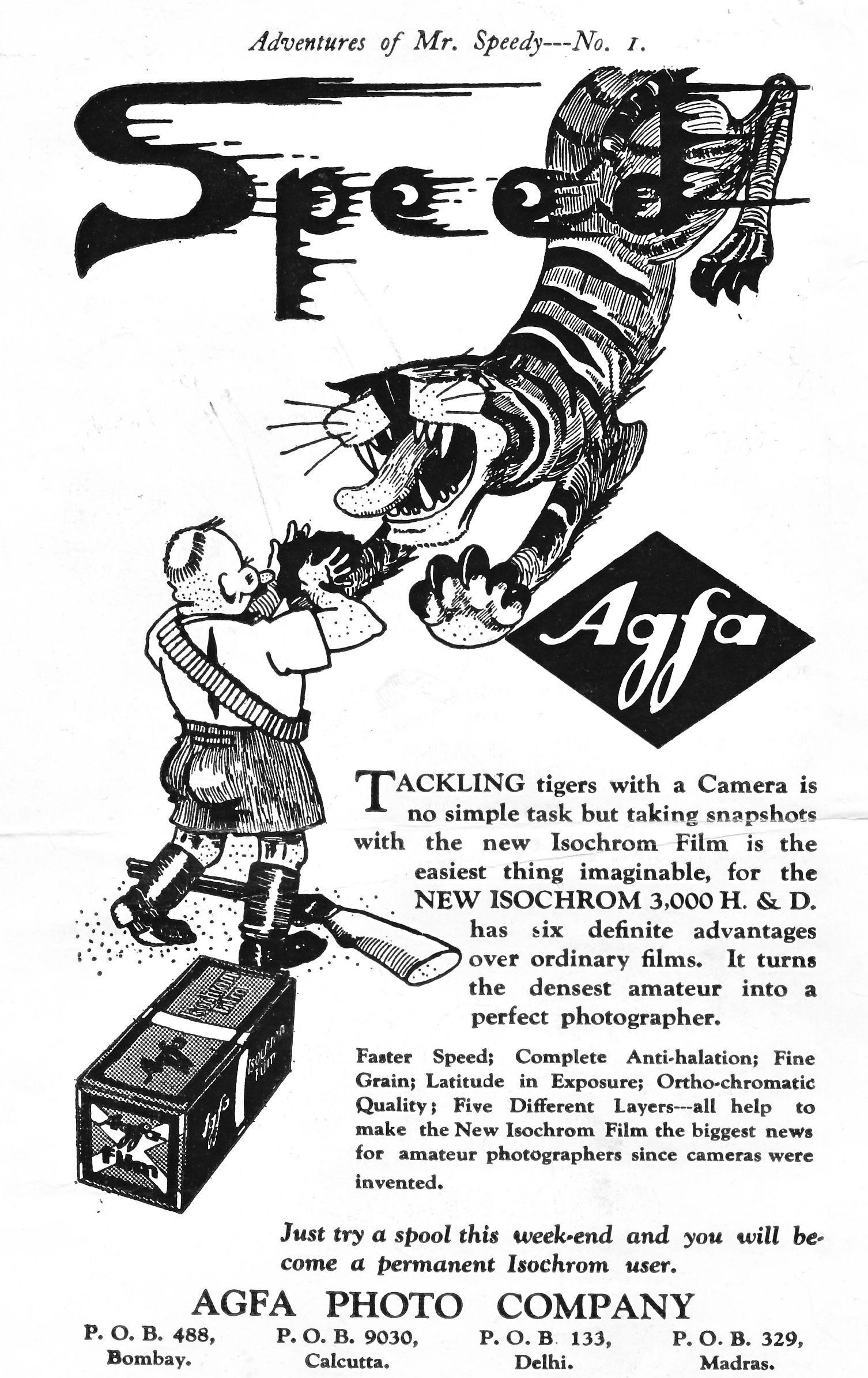
Advertisement for Agfa by Rudolf von Leyden (© Private Archive James von Leyden, Lewes; All Rights Reserved). 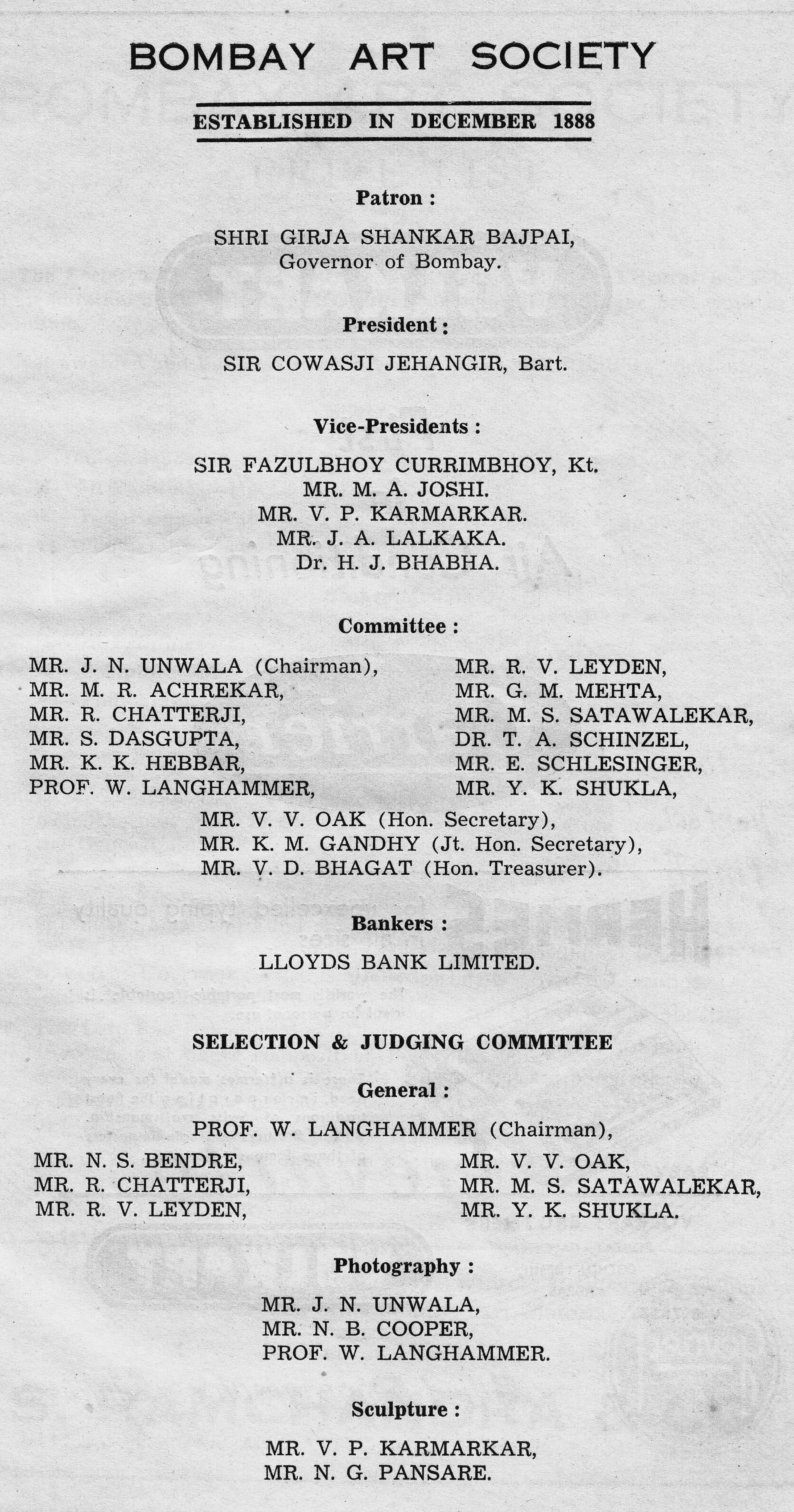
Bombay Art Society Committees 1952/53, reprinted in Bombay Art Society 62th Annual Exhibition 1952–53 (at Jehangir Art Gallery), Bombay 1952, n.p. (Photo: Margit Franz 2021). 
Two modernists meet: Indian Prime Minister Jawaharlal Nehru (left) and Rudolf von Leyden (right), 1950s. (© Private Archive James von Leyden, Lewes; All Rights Reserved). 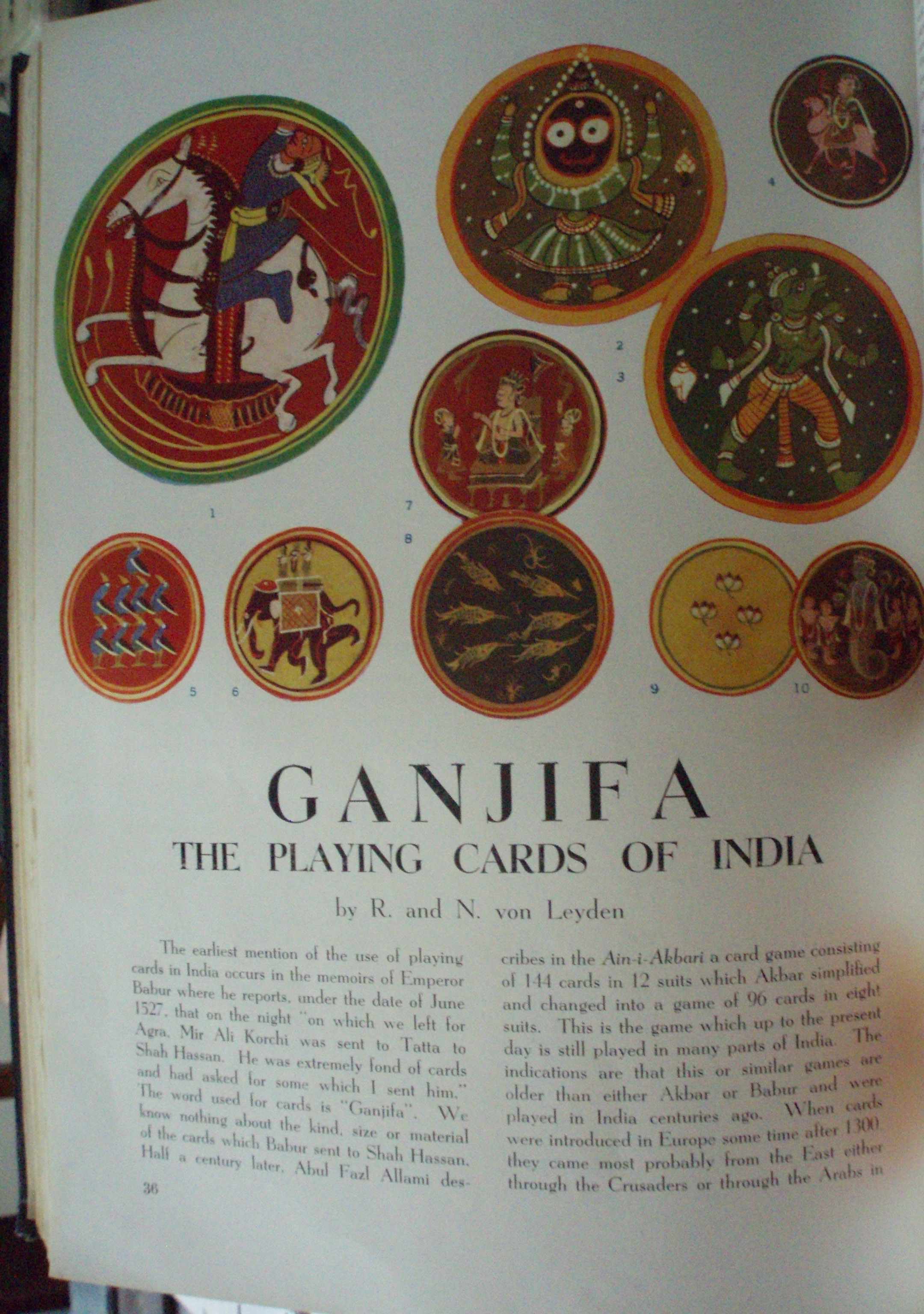
The article by Rudolf and Nena von Leyden “Ganjifa, the Playing Cards of India” (Marg, vol. 3, no. 4, 1949, p. 36; reproduced with the permission of The Marg Foundation, Mumbai, India). 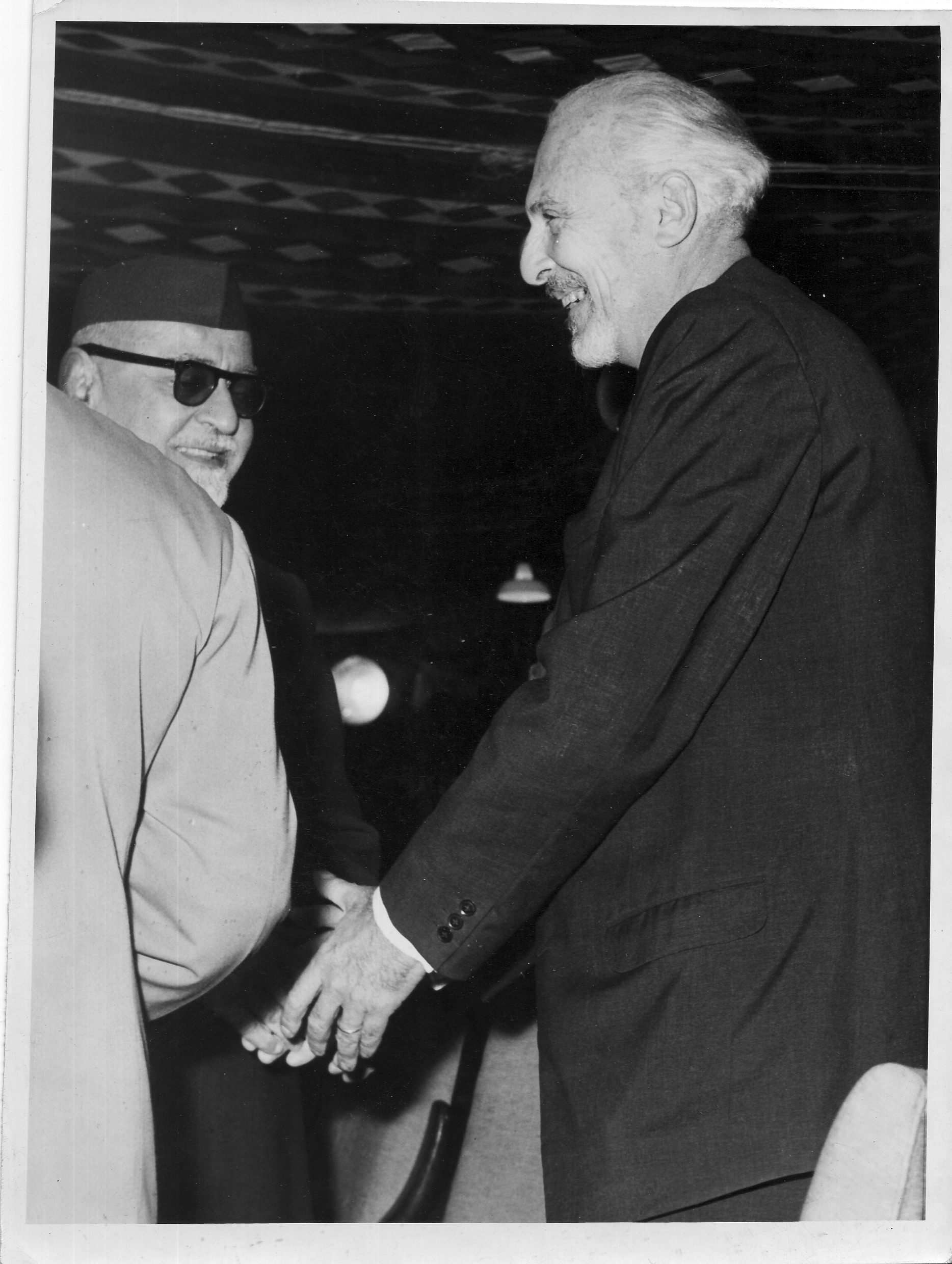
Indian President Zakir Husain (left), President of India, opened the first Triennial for contemporary art on 10 February 1968 in the Lalit Kala Gallery in New Delhi. In the picture on the left with jury member Rudolf von Leyden (right). (© Private Archive James von Leyden, Lewes; All Rights Reserved). Anonymous. “Rudiʼs got mail.” The Times of India, 7 September 2009, p. 4.
Arbuthnot, Mollie. “Bombay Satire: Rudolf von Leydenʼs Political Cartoons in India in the 1930s and 40s.” 12 December 2018, British Library, Asian and African Studies Blog, blogs.bl.uk/asian-and-african/2018/12/bombay-satire-rudolf-von-leydenspolitical-cartoons-in-india-in-the-1930s-and-40s-.html. Accessed 20 April 2021.
Dalmia, Yashodhara. The Making of Modern Indian Art: The Progressives. Oxford University Press, 2001.
Dalmia, Yashodhara. “From Jamshetjee Jeejeebhoy to the Progressive Painters.” Bombay. Mosaic of Modern Culture (3rd ed.), edited by Sujata Patel and Alice Thorner, Oxford University Press, 2003, pp. 182–193.
Dhage, Vrushali. “P. A. G. and the Role of the Critics.” art etc. news & views, February 2012, www.artnewsnviews.com/view-article.php?article=p-a-g-and-the-role-of-the-critics&iid=30&articleid=848. Accessed 18 April 2021.
Franz, Margit. “Transnationale & transkulturelle Ansätze in der Exilforschung am Beispiel der Erforschung einer kunstpolitischen Biographie von Walter Langhammer.” Mapping Contemporary History. Zeitgeschichten im Diskurs, edited by Margit Franz et al., Böhlau, 2008, pp. 243–272. Academia, www.academia.edu/45523873/Transnationale_und_transkulturelle_Ans%C3%A4tze_in_der_Exilforschung_am_Beispiel_der_Erforschung_einer_kunstpolitischen_Biographie_von_Walter_Langhammer. Accessed 14 March 2021.
Franz, Margit. “Exile meets Avantgarde: ExilantInnen-Kunstnetzwerke in Bombay.” Going East – Going South. Österreichisches Exil in Asien und Afrika, edited by Margit Franz and Heimo Halbrainer, CLIO, 2014, pp. 403–431. Academia, www.academia.edu/49079321/Exile_meets_Avantgarde_ExilantInnen_Kunstnetzwerke_in_Bombay. Accessed 16 June 2021.
Franz, Margit. Gateway India: Deutschsprachiges Exil in Indien zwischen britischer Kolonialherrschaft, Maharadschas und Gandhi. CLIO, 2015.
Franz, Margit. “From Dinner Parties to Galleries: The Langhammer-Leyden-Schlesinger Circle in Bombay – 1940s through the 1950s.” Arrival Cities. Migrating Artists and New Metropolitan Topographies in the 20th Century, edited by Burcu Dogramaci et al., Leuven University Press, 2020, pp. 73–90. Project Muse, doi: 10.1353/book.77990. Accessed 30 March 2021.
Hoskote, Ranjit. “Interview with the Author.” unpublished interview, Mumbai, 17 November 2018).
Leyden, Albrecht von. Abschied von Rudi. Friedhof Partenkirchen am 13. Mai 1983. (unpublished speech, Flora Veit-Wild Archive, Berlin, 13 May 1983).
Leyden, Rudolf von, and Nena von Leyden. “Ganjifa, the Playing Cards of India.” Marg, vol. 3, no. 4, 1949, pp. 36–56.
Mehrotra, Rahul, and Sharada Dwivedi. The Jehangir Art Gallery. Established 21st January, 1952. Jehangir Art Gallery, 2002.
Mitter, Partha. The Triumph of Modernism: India’s Artists and the Avant-garde 1922–1947. Reaktion Books, 2007.
Parimoo, Ratan. “Publications, Magazines, Journals, Polemics: Supportive Critical
Writing from Charles Fabri to Geeta Kapur.” Fifty Years of Indian Art: Institutions, Issues,
Concepts, and Conversations. Conference Proceedings 1997, edited by Bina Sarkar
Ellias, Mohile Parikh Centre for the Visual Arts, 1998, pp. 54–75.Sarukkai, Sundar, and Roger Malina. “The Humanities’ Touch: Why ArtScience Matters.” 24 November 2020, The Marg Foundation Blog, marg-art.org/blog/the-humanities-touch-why-artscience-matters. Accessed 23 April 2021.
Singh, Devika. “German-speaking Exiles and the Writing of Indian Art History.” Journal of Art Historiography, no. 17, December 2017. DOAJ, doaj.org/article/0971436ed0004ecfa1f89d7a6d9d0628. Accessed 24 April 2021.
Tata Institute of Fundamental Research. “K.H. Ara and the TIFR Art Collection: One fragment of the story of the Institute’s Art Collection with a focus on one of the founder members of the Progressive Artists’ Group – Krishnaji Howlaji Ara.” Google Arts & Culture, artsandculture.google.com/exhibit/k-h-ara-and-the-tifr-art-collection-tata-institute-of-fundamental-research/_AJyoAcQsJnlKA?hl=en. Accessed 15 April 2021.
Word Count: 494
Private Archive Margit Franz, Sinabelkirchen.
Private Archive James von Leyden, Lewes.
Rudolf von Leyden, On the crossroad!, drawing, n.d., Flora Veit-Wild Archive, Berlin.
Albrecht von Leyden. Abschied von Rudi. Friedhof Partenkirchen am 13. Mai 1983 (unpublished speech, 13 May 1983), Flora Veit-Wild Archive, Berlin.
Bombay Art Society exhibition catalogues from 1938 till 1960.Word Count: 48
Bombay (1933–1960?)
Jaiji Mansion, Merewether Road, Colaba, Bombay (now Mumbai)(residence, 1946); Belmont, Nepean Sea Road, Bombay 6 (now 37 D Nepeansea Rd., Dubash Lane, Mumbai) (residence, 1949); Sea Belle, Nepean Sea Road, Bombay 6 (Now Sea Belle Building, Nepeansea Rd, near Pedit Hall, Navshanti Nagar, Malabar Hill, Mumbai) (residence, 1960); Ali Building, 72 Old Customs House Road, Bombay (now 72, Old Custom House Rd, Kala Ghoda, Fort, Mumbai ) (workplace, 1934–1937); Times of India Building, Dhobi Talao, Chhatrapati Shivaji Terminus Area, Fort, Mumbai (workplace, 1937–1952).
- Bombay
- Margit Franz. "Rudolf von Leyden." METROMOD Archive, 2021, https://archive.metromod.net/viewer.p/69/2951/object/5138-7555962, last modified: 14-09-2021.
-
Mulk Raj AnandWriterPhilosopherArt PatronCultural CriticBombay
As a global socialist and modernist, Mulk Raj Anand sought and shaped opportunities for intellectual exchanges between Asia and Europe.
Word Count: 20
Kekoo Minochair GandhyFrame Shop OwnerGalleristArt CollectorBombayStarting from a cosmopolitan milieu for young local artists, Kekoo and his wife Khorshed Gandhy developed a business model that turned the frame shop into Gallery Chemould.
Word Count: 27
Magda Nachman AcharyaArtistTheatre DesignerIllustratorTeacherBombayThe political turmoil of the twentieth century took Magda Nachman from St. Petersburg to Moscow to the Russian countryside, then to Berlin during the 1920s and 1930s and, finally, to Bombay.
Word Count: 31
Homi Jehangir BhabhaScientistCollectorArtistBombayHomi Jehangir Bhabha was a world class scientist, institution builder, an artist and art connoisseur. His vision for growth of science and art has had significant impact in post-colonial India.
Word Count: 30
Minnette De SilvaArchitectJournalistBombayProbably the first Sri Lankan woman architect and a founding member of Marg, Minnette De Silva mediated between tradition and modernity while defying the boundaries of gender, caste and disciplines.
Word Count: 30
Marg. A Magazine of Architecture and ArtMagazineBombayLocal and exiled creatives formed the Modern Architectural Research Group to publish a progressive journal of art and architecture in Bombay from 1946 onwards.
Word Count: 23
Iconic Photo of the Progressive Artists’ Group and Their AssociatesPhotographBombayThere are two versions of the PAG photo at the opening of M.F. Husain's first solo exhibition in 1950 (published in 1996 and 2003) and two narratives about the opening.
Word Count: 28
Schimmel’s Wedding Film 1948FilmBombayThe film shows Schimmel’s Jewish wedding ceremony at the prestigious Glamis Villa, followed by lunch at the Taj Mahal Hotel. Among the guests were Käthe and Walter Langhammer.
Word Count: 30
Picture of Rudi von Leyden’ s Bust by Sadanand K. BakrePhotographBombayThe picture of the previously lost and recently located sculpture by Sadanand K. Bakre reflects the relationship between the artist Bakre and the art critic Rudi von Leyden.
Word Count: 28
The Leydens: Sculpture, Paintings, CartoonsExhibitionBombayIn 1948 Albrecht and Rudi von Leyden sold their personal works of art in order to set up an “Artists' Aid Fund”, which became an institution in the following years.
Word Count: 29
One Man exhibition and subsequent trial, Akbar PadamseeCourt CaseBombayAkbar Padamsee’s solo exhibition in Bombay in 1954 was overshadowed by his arrest on charge of displaying obscene pictures. The subsequent court case drew support from across the art world.
Word Count: 30
The Feldberg Art Collection. A Series of Three Exhibitions of European Artworks collected by the Feldberg FamilyExhibitionBombayIn 1950 the Institute of Foreign Languages organised three exhibitions of paintings from the collection of the exiled Jewish manufacturer Siegbert Feldberg and his wife Hildegard from Stettin.
Word Count: 27
TIFRUniversity / Higher Education Institute / Research InstituteBombayThe TIFR is one of India’s premier scientific institutions. Inside its buildings, scientists ponder over path-breaking ideas. Also, within its hallowed walls is a fine collection of modern Indian art.
Word Count: 31
Institute of Foreign LanguagesLanguage SchoolExhibition SpaceLibraryTheatreBombayWith its wide range of cultural activities, the Institute of Foreign Languages − founded in 1946 by the Viennese emigrant Charles Petras − became a glocal contact zone in Bombay.
Word Count: 27
Bombay Art SocietyAssociationBombayOne of the oldest art societies in India founded by colonial rulers, Bombay Art Society showcased art students and professional artists from all over India, including the Progressive Artists of Bombay.
Word Count: 31
Air IndiaAirlineBombayAir India was one of the largest art collectors in Bombay. Indian art was used as branding for Air India in international competition right from the start.
Word Count: 27
Jehangir Art GalleryArt GalleryAuditorium HallLibraryBombayEfforts to create spaces for the democratic presentation, discussion and reflection of art in Bombay after independence led to the establishment of the Jehangir Art Gallery in 1952.
Word Count: 27
Emanuel SchlesingerFactory OwnerTechnical DirectorArt CollectorArt CriticBombayThe art collector Schlesinger provided primarily financial aid by creating working opportunities for young artists in post-independence Bombay, and initiated the corporate culture of buying art.
Word Count: 26
Open Studio Evenings by Käthe and Walter LanghammerSalonBombayThe painter Walter Langhammer and his wife Käthe built an informal infrastructure to promote local avant-garde artists and regularly invited them to Open Studio Evenings at their studio.
Word Count: 29